Automation Strategies to Elevate Customer Experience in 2025

Automation is reshaping how businesses interact with customers, making experiences faster, smarter, and more personalized. By 2025, companies that embrace customer support automation will see significant gains. For instance, brands have already reported a 1% rise in Customer Satisfaction (CSAT) scores, climbing from 4.46 to 4.51. This improvement reflects how automation strategies can enhance service quality.
The numbers speak for themselves. Businesses adopting automation have achieved a 36% increase in repeat purchases and a 52% reduction in resolution time. Tools like Sobot's AI-powered chatbot empower you to deliver seamless support, ensuring customers receive quick and accurate responses. As customer expectations grow, automation becomes essential for staying competitive and building loyalty.
Understanding Customer Support Automation
What is Customer Support Automation?
Customer support automation refers to the use of technology to reduce or supplement human involvement in addressing customer inquiries and resolving issues. It empowers businesses to deliver faster and more efficient service by automating repetitive tasks. For example, Uniphore automated the transfer of legacy data, including thousands of tickets and attachments, which significantly reduced manual workload and sped up onboarding. This streamlined support operations and minimized downtime.
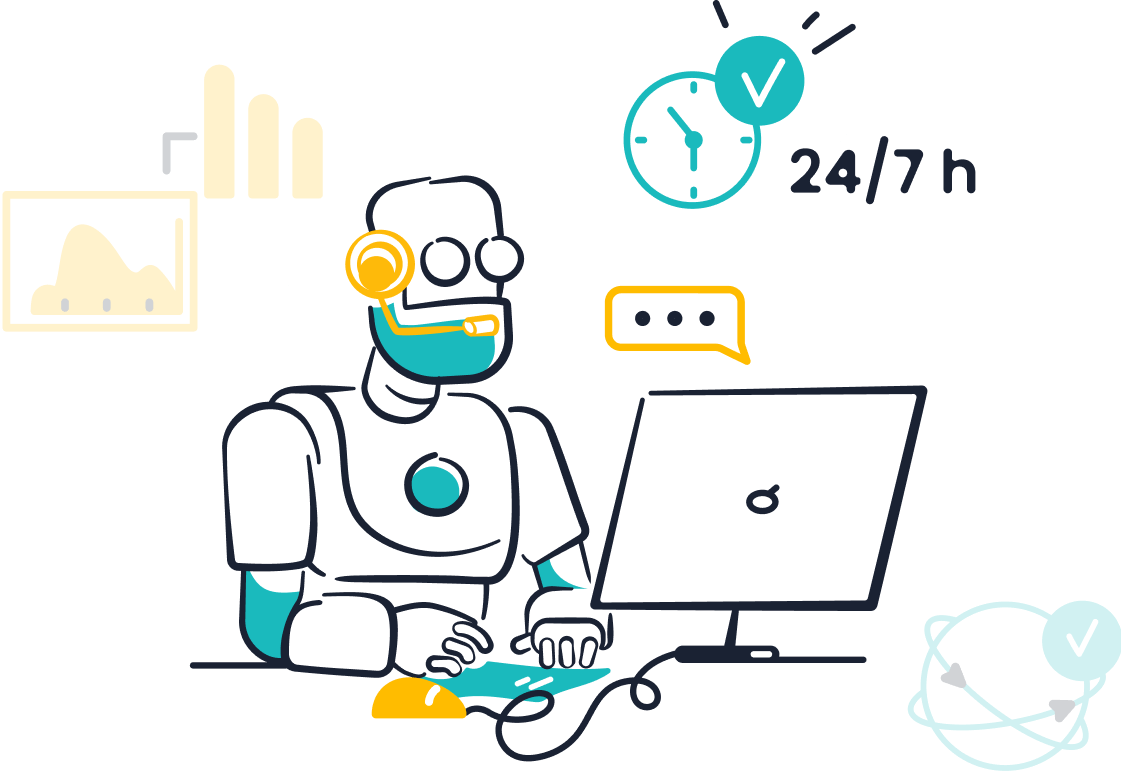
Automation also enables customers to resolve simple problems independently, saving time and improving resource allocation. With 75% of customers expecting service within five minutes of online contact, automated customer service solutions are essential for meeting these demands. By integrating tools like Sobot's AI-powered chatbot, businesses can provide 24/7 support, ensuring quick and accurate responses while reducing operational costs.
The Role of Automation in Enhancing Customer Interactions
Automation plays a pivotal role in enhancing customer interactions by delivering personalized and efficient experiences. AI automation tools, such as chatbots and predictive analytics, allow businesses to anticipate customer needs and provide tailored solutions. For instance, Sephora's AI-driven virtual assistant facilitated over 332,000 conversation sessions, attracting more than 9,000 users. Similarly, T-Mobile streamlined call transfers and ticket escalations, ensuring agents had comprehensive customer information for effective assistance.
Automated customer service also improves engagement by offering real-time insights into customer behavior. Starbucks, for example, uses advanced data analytics to hyper-personalize customer experiences, boosting satisfaction and loyalty. By leveraging AI automation, businesses can create meaningful connections with customers, fostering trust and long-term relationships.
Key Technologies Driving Customer Experience AI
Several advanced technologies drive the implementation of customer experience AI, transforming how businesses interact with customers:
- Emotion AI: This technology analyzes facial cues and tone of voice to understand customer emotions, enabling empathetic interactions.
- Immersive Experiences: AI integration with AR/VR creates interactive and engaging customer support experiences.
- Autonomous AI Systems: These systems operate independently to optimize customer journeys and improve service quality.
For example, NICE Ltd.’s AI solutions helped Compass achieve a 65% one-touch resolution rate for customer inquiries. This not only enhanced customer satisfaction but also boosted sales. Similarly, a leading retailer implemented an AI-driven personalization engine, resulting in a 20% increase in sales and improved customer satisfaction. These examples highlight the transformative potential of customer experience AI in delivering exceptional service.
Strategies to Leverage Automation for Customer Experience
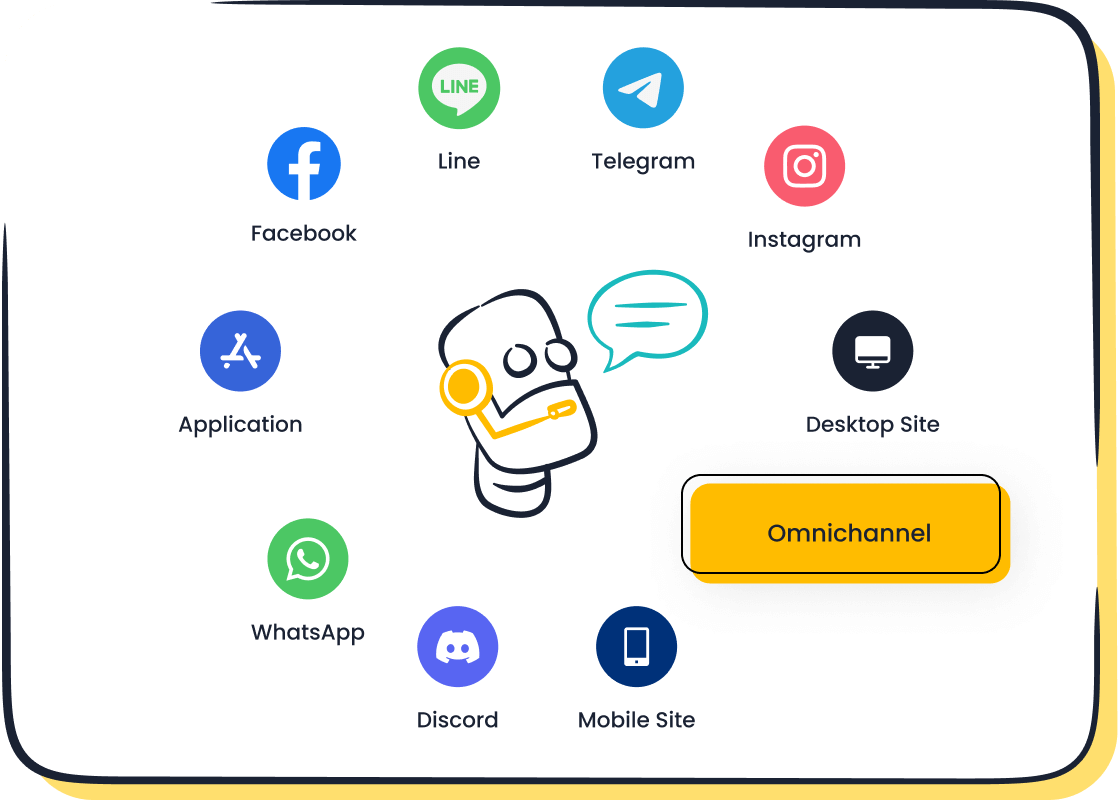
Empowering Customers with Self-Service Channels
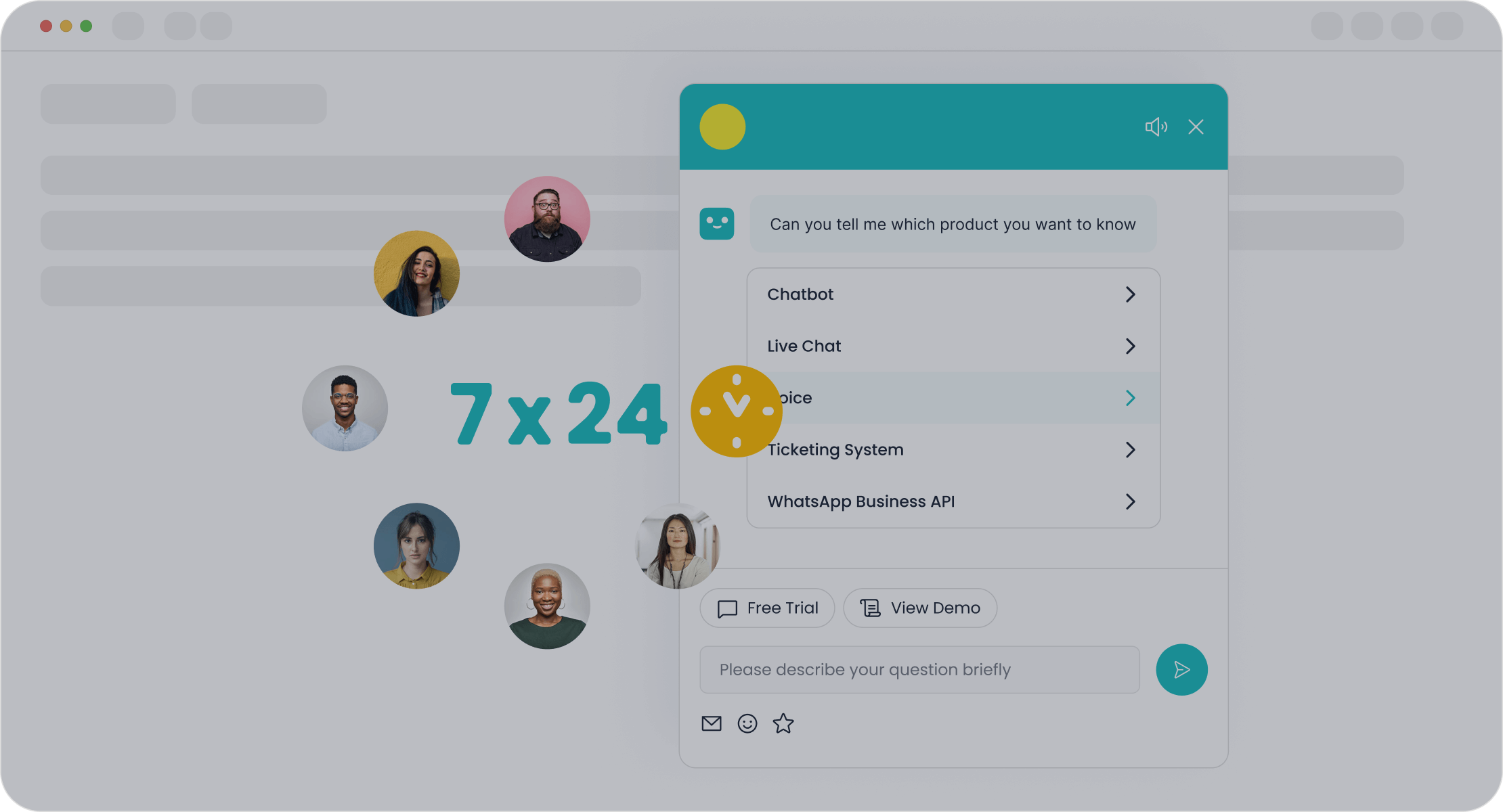
Self-service channels empower customers by giving them control over their interactions. These channels allow customers to find answers to common questions, resolve issues, and access information without waiting for human assistance. For example, Sobot's AI-powered chatbot operates 24/7, providing real-time responsiveness and hyper-relevant recommendations. This ensures customers can resolve their queries at their convenience.
Self-service channels offer several benefits:
| Benefit | Description |
|---|---|
| More options | Expands the number of self-service options available to customers, catering to different preferences. |
| Increased security and convenience | Offers secure access and allows customers to interact at their convenience, without time constraints. |
| Improved customer satisfaction | Strives to enhance overall satisfaction through quicker and simpler interactions. |
By integrating self-service channels, you can reduce operational costs while improving customer satisfaction. These channels also free up your agents to focus on complex issues, enhancing overall efficiency.
Personalizing Interactions with AI-Powered Tools
Personalization is key to creating meaningful customer experiences. AI-powered tools analyze customer behavior and preferences to deliver tailored engagement strategies. For instance, a leading retailer used an AI-driven personalization engine to provide hyper-relevant recommendations, resulting in a 20% increase in sales and improved customer satisfaction.
Sobot's omnichannel solution unifies customer interactions across platforms, enabling personalized experiences. With multilingual support and AI-driven insights, you can anticipate customer needs and provide real-time responsiveness. Companies like Telstra have reported a 20% reduction in follow-up calls and a 90% improvement in agent effectiveness by leveraging AI tools.
Personalized interactions build trust and loyalty. By adopting AI-powered tools, you can create a journey that resonates with your customers, fostering long-term relationships.
Proactive Support Through Predictive Analytics
Predictive analytics allows you to anticipate customer needs and address issues before they arise. This proactive approach enhances customer satisfaction and reduces churn. For example, early churn detection identifies at-risk customers, enabling timely interventions.
| Benefit of Predictive Analytics | Description |
|---|---|
| Early Churn Detection | Identifies customers at risk of leaving, allowing for timely intervention. |
| Personalized Customer Engagement | Tailors interactions based on customer behavior and preferences. |
| Proactive Issue Resolution | Addresses potential problems before they escalate, improving customer satisfaction. |
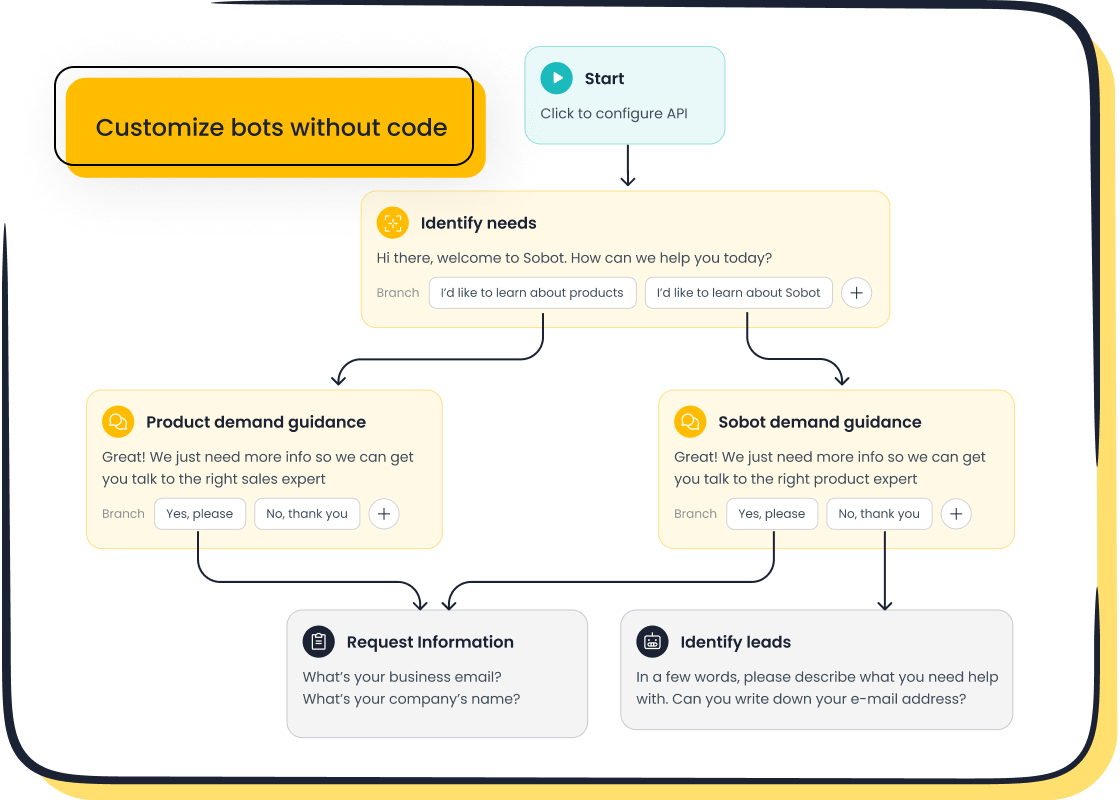
Sobot's AI-powered chatbot uses predictive analytics to provide hyper-relevant recommendations and real-time responsiveness. This ensures customers receive proactive support, enhancing their overall experience. By implementing predictive analytics, you can stay ahead of customer expectations and deliver exceptional service.
Automating Proactive Communication for Better Engagement
Proactive communication is a game-changer for improving customer engagement. By reaching out to customers before they encounter issues, you can build trust and loyalty. Automating this process ensures timely and consistent interactions, which enhances the overall experience. For example, predictive analytics can identify when a customer might need assistance, allowing you to send helpful information or offers in advance.
Automated proactive communication also helps you maintain engagement across multiple channels. Tools like Sobot's omnichannel solution unify customer interactions, ensuring seamless communication. Whether through email, SMS, or social media, you can deliver personalized messages that resonate with your audience. This approach not only improves customer satisfaction but also increases retention rates.
A great example of proactive customer service is sending reminders for subscription renewals or updates on order statuses. These small gestures show customers that you value their time and needs. By automating these tasks, you can focus on more complex customer interactions while maintaining high engagement levels.
Streamlining Operations with Sobot's Chatbot
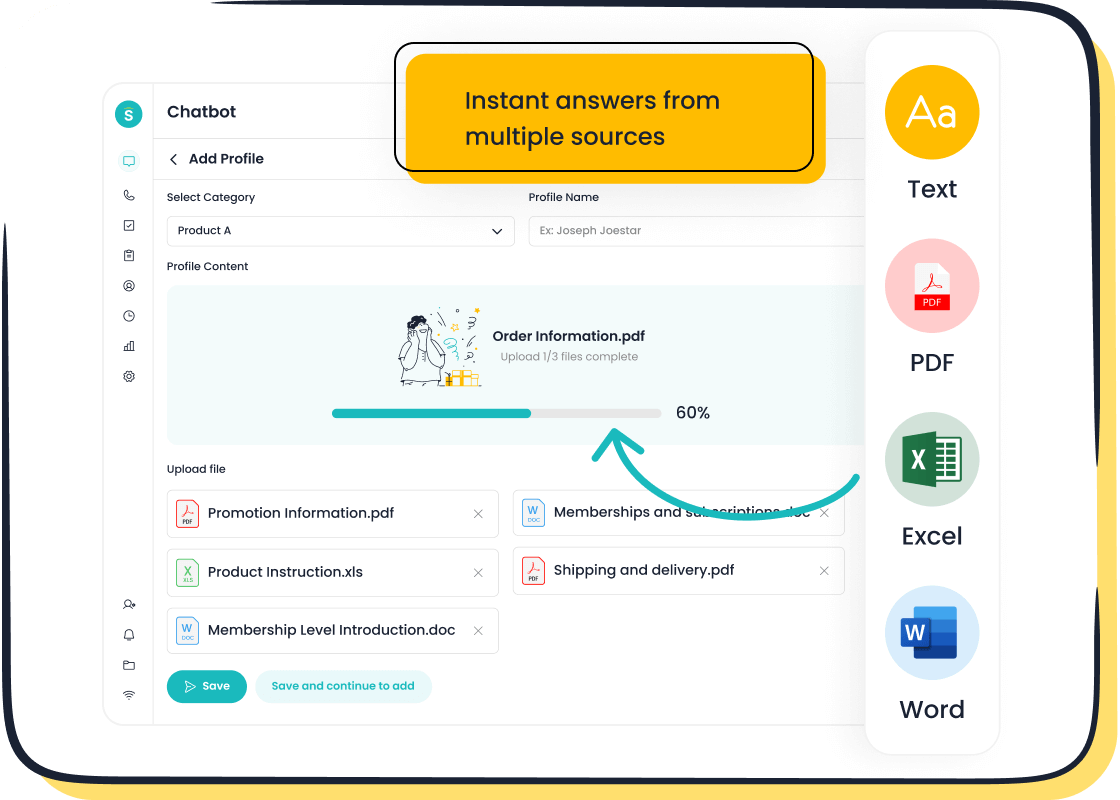
Sobot's AI-powered chatbot is a powerful tool for automating contact center operations. It handles routine queries, freeing up your agents to tackle more complex issues. This efficiency boost translates into better service quality and happier customers. The chatbot operates 24/7, ensuring customers always receive timely responses.
The results speak for themselves. Businesses using Sobot's chatbot have reported significant improvements:
| Metric | Result |
|---|---|
| Reduction in inbound discussion volume | 20% |
| Increase in positive feedback | 96% + |
| Correct answers provided by AI | 80% |
| Customer satisfaction rate | 95% |
| Self-service question resolution | 22.2% |
| Customer satisfaction score (CSAT) | 97% |
| Problem resolution rate | 85% |
| Customer happiness rate | 99% |
| Increase in sign-off rate | 35% |
| Increase in COD collection rate | 40% |
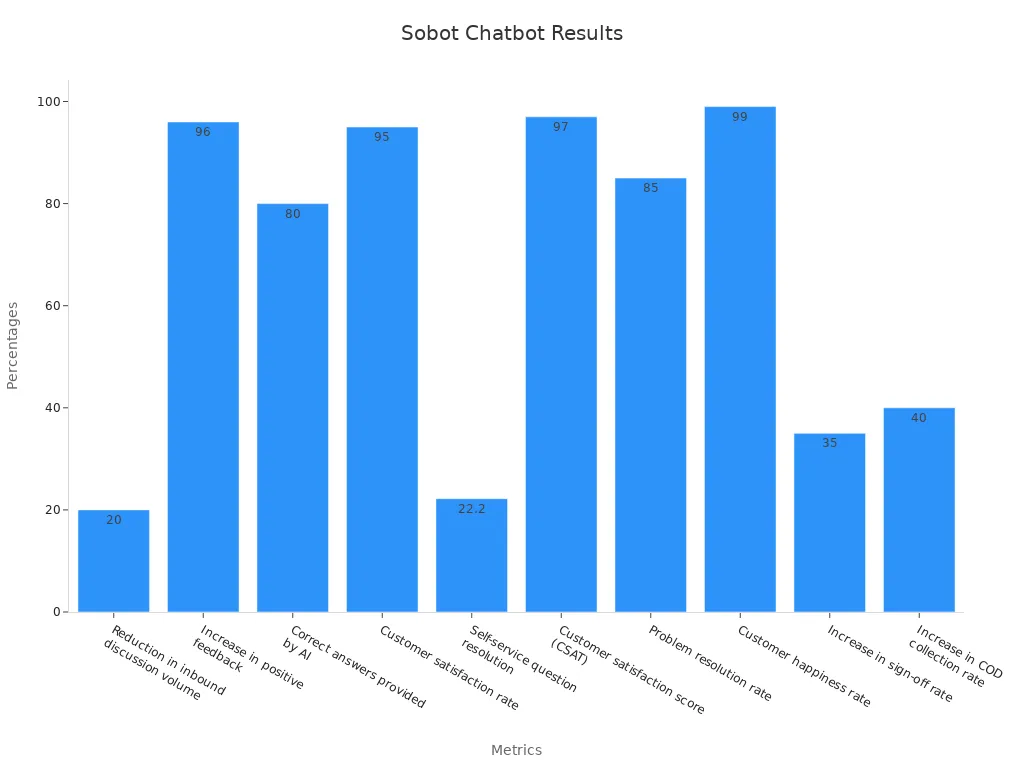
By integrating Sobot's chatbot, you can streamline operations and enhance engagement. The chatbot's ability to provide accurate answers and resolve issues quickly ensures a smooth experience for your customers. This not only improves satisfaction but also boosts your team's productivity.
Benefits of Customer Service Automation
Improving Efficiency and Reducing Response Times
Customer service automation significantly enhances efficiency by streamlining repetitive tasks and reducing response times. Automated tools like chatbots handle routine inquiries instantly, ensuring customers receive timely assistance. For example, Sobot's AI-powered chatbot operates 24/7, resolving common queries without human intervention. This allows your team to focus on complex issues, improving overall productivity.
The impact of automation is evident in the numbers:
| Benefit | Percentage Improvement |
|---|---|
| Repeat Purchases | 36% |
| First Response Time | 37% |
| Resolution Time | 52% |
| Ticket-to-Order Ratio | 27% |
| Customer Satisfaction (CSAT) | 1% |
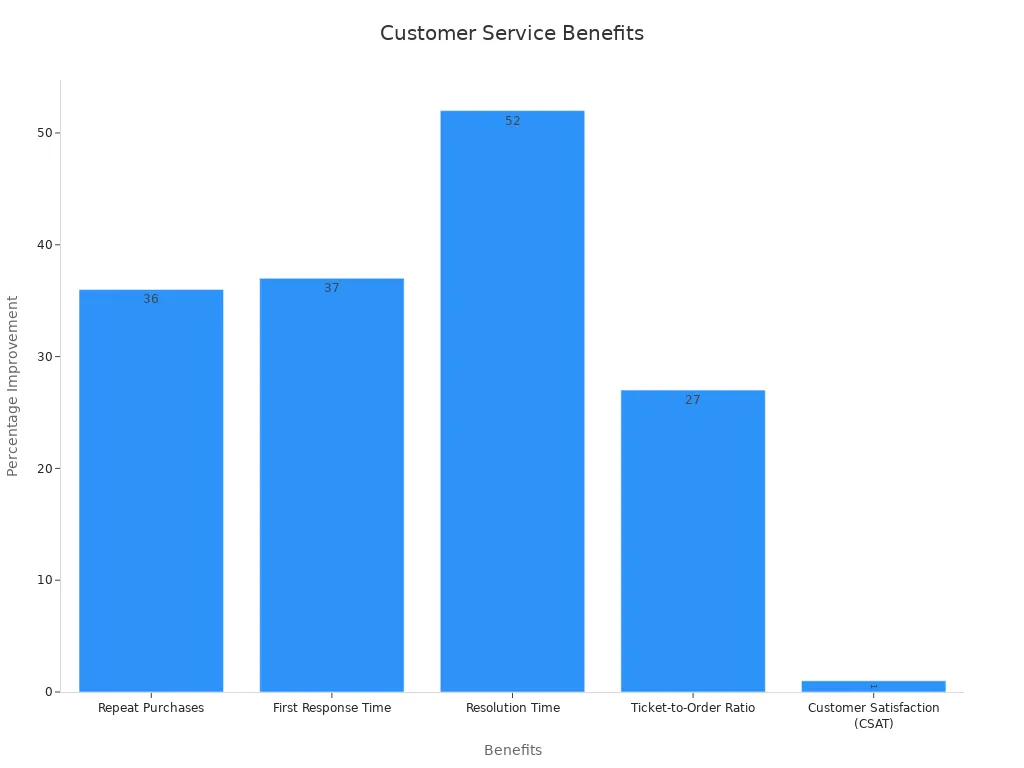
By adopting automated customer service solutions, you can achieve faster resolutions and improved customer experience management, ensuring your customers feel valued and supported.
Scaling Customer Support Without Compromising Quality
Automation enables you to scale your customer support operations while maintaining high-quality service. As your business grows, handling a larger volume of inquiries becomes challenging. Automated systems like Sobot's omnichannel solution unify customer interactions across platforms, ensuring seamless communication. This integration reduces the workload on agents and enhances efficiency.
For instance, automated customer service tools can handle thousands of queries simultaneously, ensuring no customer is left waiting. This scalability improves customer retention by providing consistent and reliable support, even during peak times. Additionally, automation reduces operational costs, allowing you to allocate resources more effectively.
Enhancing Customer Satisfaction Through Personalization
Personalization is a cornerstone of improved customer experience. Automated tools analyze customer behavior and preferences to deliver tailored interactions. Research shows that 80% of consumers are more likely to purchase when brands offer personalized experiences, and 90% find personalization appealing.
Sobot's AI-powered chatbot excels in creating personalized experiences. It uses predictive analytics to anticipate customer needs, providing hyper-relevant recommendations. This approach not only boosts customer satisfaction but also fosters loyalty. Personalized interactions lead to 56% of consumers becoming repeat buyers, highlighting the importance of tailoring your services to individual needs.
By leveraging customer service automation, you can enhance personalization, improve customer retention, and build lasting relationships with your customers.
Reducing Costs While Maximizing ROI
Automating customer service is one of the most effective ways to reduce costs while maximizing your return on investment (ROI). By implementing customer service automation tools, you can streamline operations, minimize manual tasks, and allocate resources more efficiently. This approach not only saves money but also enhances customer satisfaction by delivering faster and more accurate responses.
For example, businesses that adopted AI automation reported a 40% improvement in efficiency and a 25% reduction in operational costs. These tools also reduced first response times from over a day to just three minutes. The table below highlights the measurable benefits of automation:
| Metric | Value |
|---|---|
| ROI | 3x |
| AI Automation | 40% |
| Cost Savings | 25% |
| First Response Time (FRT) | Reduced from over 1 day to 3 minutes |
Sobot's AI-powered chatbot is a prime example of how automation can drive cost savings. It operates 24/7, handling routine queries without the need for additional agents. This reduces labor costs by up to 50%. The chatbot also improves productivity by 70%, allowing your team to focus on complex customer issues. With features like multilingual support and real-time responsiveness, Sobot ensures customers receive high-quality service while keeping expenses low.
Customer service automation also helps you scale operations without increasing costs. Automated systems can handle thousands of inquiries simultaneously, ensuring no customer is left waiting. This scalability is crucial for businesses experiencing rapid growth or seasonal spikes in demand. By automating customer service, you can maintain consistent quality while optimizing your budget.
Investing in automation tools like Sobot's omnichannel solution not only reduces costs but also boosts ROI. The unified platform integrates customer interactions across channels, providing a seamless experience. With advanced analytics, you can monitor performance and make data-driven decisions to further enhance efficiency. This combination of cost savings and improved service quality ensures long-term success for your business.
Practical Steps to Implement Automation Strategies
Choosing the Right Tools for Customer Experience AI

Selecting the right tools is crucial for implementing effective automation strategies. With 32% of customers willing to stop doing business after a single poor experience, you must prioritize tools that enhance satisfaction and efficiency. AI-powered solutions can personalize interactions, improve service quality, and provide valuable insights. For example, Sobot's AI-powered chatbot offers multilingual support and real-time responsiveness, ensuring seamless communication across channels.
When evaluating tools, consider factors like data quality, ethical implications, and human oversight. High-quality data ensures accurate AI predictions, while ethical considerations build trust with customers. Human oversight remains essential for handling complex queries that automation cannot address. By focusing on these criteria, you can choose tools that align with your business goals and customer expectations.
Integrating Automation with Existing Systems
Integrating automation with legacy systems can seem challenging, but it is essential for a smooth transition. Start by migrating to the cloud to leverage scalable infrastructure. Containerizing legacy workloads can also enhance agility and scalability. For instance, using API integration platforms simplifies the process by connecting older systems with modern technologies.
Sobot's omnichannel solution exemplifies seamless integration. It unifies customer interactions across platforms like email, social media, and live chat, ensuring consistent service. Machine learning can further optimize legacy systems by monitoring performance and identifying areas for improvement. Treating legacy systems with respect fosters innovation and ensures a successful integration process.
Training Teams to Collaborate with Automation
Your team plays a vital role in the success of automation strategies. Training them to collaborate with automated systems ensures smooth operations and better customer experiences. Focus on both technical skills and soft skills like empathy and communication. For example, frameworks like CrewAI and LangChain support team-based AI systems and modular automation, making collaboration more effective.
Encourage your team to provide customer feedback on automated processes. This feedback helps refine the system and ensures it meets customer needs. Regular performance monitoring also identifies areas for improvement, allowing you to address issues promptly. By empowering your team with the right training and tools, you can create a harmonious balance between human expertise and automation.
Using Feedback to Optimize Automated Systems
Optimizing automated systems requires a continuous feedback loop. Customer feedback serves as a vital tool for identifying areas of improvement and ensuring your systems meet expectations. By actively listening to your customers, you can refine processes, enhance efficiency, and deliver better experiences.
Analytics software plays a key role in this optimization. It evaluates historical data to assess past performance while monitoring new data to uncover opportunities for improvement. This dual approach provides a clear picture of how your automated systems perform and what adjustments are needed.
To make feedback actionable, follow these steps:
- Define key metrics that matter most, such as customer satisfaction scores, response times, and engagement levels.
- Focus on areas with the greatest impact to ensure feedback leads to meaningful changes.
- Regularly review these metrics to track progress and identify trends.
Real-time feedback optimization also enhances organizational effectiveness. It allows you to quickly spot patterns in customer behavior and adapt your systems accordingly. This fosters a culture where input is valued, leading to improved performance and stronger relationships with your customers.
For example, Sobot's AI-powered chatbot uses customer feedback to fine-tune its responses. By analyzing satisfaction scores and engagement data, the chatbot continuously improves its ability to provide accurate and timely answers. This ensures your customers receive the best possible support, boosting satisfaction and loyalty.
Incorporating feedback into your automation strategy not only improves system performance but also demonstrates your commitment to meeting customer needs. By valuing their input, you build trust and create a more responsive and effective service experience.
Future Trends in Customer Experience Automation
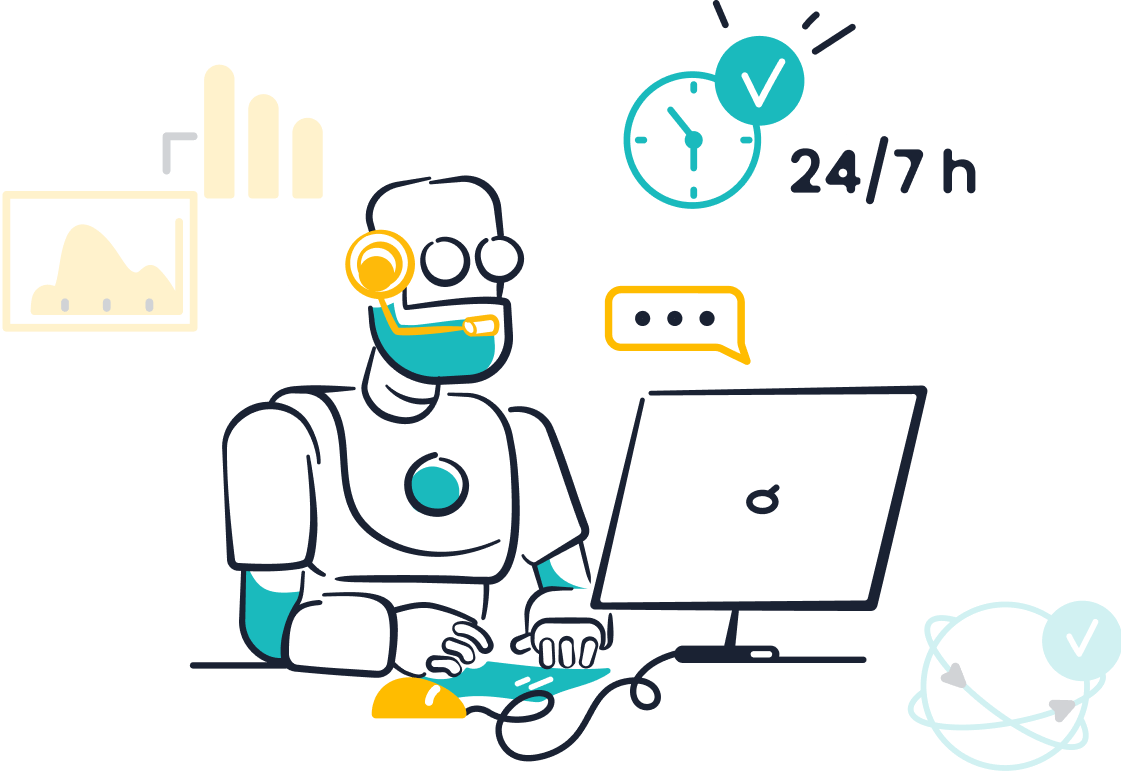
Emotion AI for Empathetic Customer Interactions
Emotion AI is revolutionizing how you connect with customers by enabling empathetic interactions. This technology analyzes emotional cues like tone of voice and facial expressions to understand how customers feel. For example, 71% of customers believe AI can make experiences more empathetic, while 67% want AI to adjust its tone based on their emotions. Nearly 75% feel their emotional state is often ignored during digital interactions. By addressing these gaps, Emotion AI helps you create meaningful connections.
Imagine a scenario where a customer expresses frustration during a chat. Emotion AI detects this and adjusts its responses to show understanding and offer solutions. This approach not only resolves issues faster but also builds trust. Tools like Sobot's AI-powered chatbot can integrate Emotion AI to enhance personalization, ensuring every interaction feels human and thoughtful.
Immersive Experiences with AR and VR in Customer Support
Augmented Reality (AR) and Virtual Reality (VR) are transforming customer support by creating immersive experiences. These technologies allow customers to interact with products in ways that were once impossible. For instance, AR lets customers visualize products in their environment, while VR transports them into a virtual world for interactive demonstrations. Virtual try-ons and gamified challenges further enhance engagement.
Imagine a customer exploring a new appliance. With AR, they can see how it fits in their kitchen. VR could guide them through a virtual setup process. These experiences improve decision-making and satisfaction. Sobot's omnichannel solution can integrate AR and VR to deliver personalized support, ensuring customers receive tailored assistance that meets their unique needs.
Hyper-Personalization with Advanced AI Algorithms
Hyper-personalization is the future of customer experience. Advanced AI algorithms, such as machine learning and natural language processing, analyze real-time data to predict customer needs. This allows you to deliver tailored solutions at every touchpoint. By 2025, brands will rely on AI to gather extensive data across customer journeys, ensuring every interaction feels relevant.
For example, a customer browsing your website might receive product recommendations based on their preferences. Sobot's AI-powered chatbot excels in this area, offering multilingual support and real-time responsiveness. This level of personalization not only boosts satisfaction but also encourages loyalty. Studies show that 80% of consumers prefer brands that offer personalized experiences, making hyper-personalization essential for staying competitive.
Ethical Considerations in Customer Service Automation
As automation becomes a cornerstone of customer service, ethical considerations must guide its implementation. You need to ensure that automation enhances customer experiences without compromising trust, privacy, or fairness.
Key Ethical Guidelines
Ethical frameworks provide a foundation for responsible automation. The table below outlines essential principles:
| Ethical Guidelines | Description |
|---|---|
| Design Principles | AI should promote rights and welfare, rooted in respect for human rights and social responsibility. |
| Regulatory Approach | Differentiated regulations for high-risk applications, with self-certification for non-risk AI. |
| Oversight | Emphasis on oversight by authorities to ensure compliance with ethical standards. |
These guidelines help you align automation strategies with societal values, ensuring that your customers feel respected and secure.
Addressing Ethical Challenges
Automation introduces challenges that require careful management. These include:
- The complexity of gaining customer trust.
- Ensuring communication and data privacy.
- Avoiding deceptive practices in automation.
For example, decentralization and depersonalization can make customers feel disconnected. Job displacement of service staff is another concern, as automation replaces repetitive tasks. You can mitigate these issues by maintaining transparency and offering retraining programs for employees.
Practical Solutions for Ethical Automation
To address these challenges, you should adopt strategies that prioritize customer welfare. For instance, Sobot's AI-powered chatbot ensures data privacy by adhering to strict security protocols. It also personalizes interactions, reducing the risk of depersonalization. By integrating ethical design principles, you can create automation systems that build trust and loyalty among your customers.
Ethical automation is not just a responsibility; it’s an opportunity to strengthen relationships with your customers. By prioritizing fairness, transparency, and respect, you can ensure that automation serves as a tool for positive change.
Automation has become a cornerstone of delivering exceptional customer experiences. By reducing tickets, tailoring communication, and automating routine tasks, businesses can ensure faster responses and consistent service across all channels. These tools free up time for meaningful conversations, personalized experiences, and seamless upselling opportunities, transforming how you interact with customers.
Adopting strategies like predictive analytics, self-service channels, and AI-powered tools boosts customer satisfaction and retention. For example, Sobot's Chatbot uses machine learning to provide quick, precise answers, ensuring customers feel valued. As personalized services evolve into thoughtful interactions, automation will redefine customer engagement in 2025.
To stay competitive, integrate solutions like Sobot's Chatbot into your operations. It enhances efficiency, reduces costs, and delivers consistent, on-brand messaging. Empower your customers with smarter tools and proactive support to build loyalty and drive growth.
FAQ
What is the main benefit of customer service automation?
Automation improves efficiency by handling repetitive tasks, allowing your team to focus on complex issues. For example, Sobot's AI-powered chatbot operates 24/7, resolving common queries instantly. This ensures faster responses and enhances the experience for your customers.
How does automation help in personalizing customer interactions?
Automation tools analyze customer data to deliver tailored experiences. Sobot's omnichannel solution unifies interactions across platforms, providing insights that help you anticipate customer needs. This approach builds trust and loyalty by making every interaction feel personal.
Can automation reduce operational costs?
Yes, automation significantly reduces costs. Sobot's chatbot, for instance, handles routine queries without additional agents, cutting expenses by up to 50%. This allows you to allocate resources more effectively while maintaining high-quality service for your customers.
Is it difficult to integrate automation tools with existing systems?
Not at all. Modern solutions like Sobot's omnichannel platform integrate seamlessly with legacy systems. Features like API support and cloud migration simplify the process, ensuring smooth transitions and consistent service for your customers.
How does automation improve customer satisfaction?
Automation ensures quick and accurate responses, which boosts satisfaction. For example, Sobot's chatbot resolves issues instantly, reducing wait times. Predictive analytics also helps you address potential problems before they arise, ensuring a seamless experience for your customers.
See Also
Enhancing Efficiency With AI-Driven Customer Service Solutions
Transforming Support Through AI Customer Service Agents
A Guide to Successfully Implementing Omnichannel Contact Centers